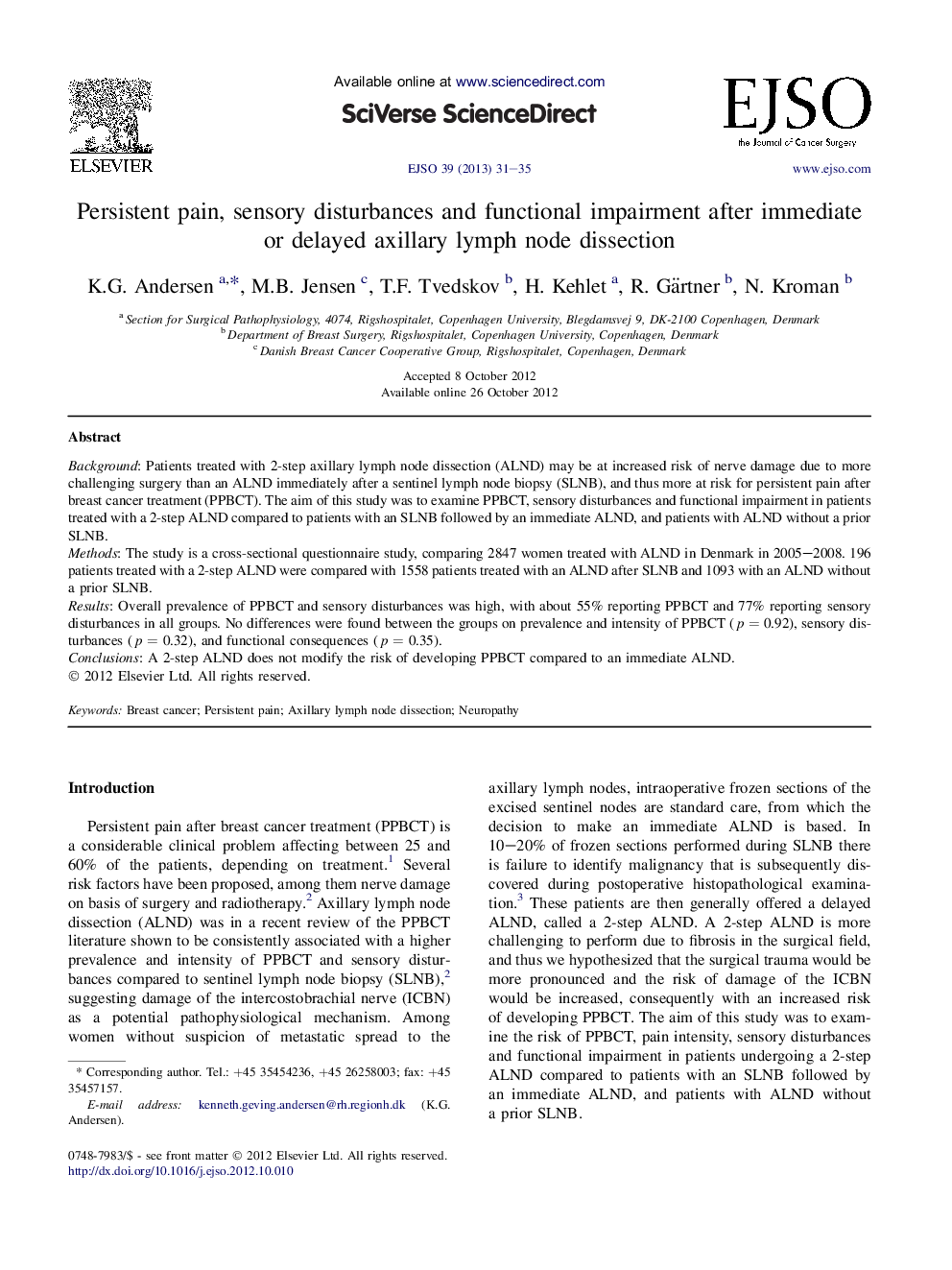| Article ID | Journal | Published Year | Pages | File Type |
|---|---|---|---|---|
| 3985348 | European Journal of Surgical Oncology (EJSO) | 2013 | 5 Pages |
BackgroundPatients treated with 2-step axillary lymph node dissection (ALND) may be at increased risk of nerve damage due to more challenging surgery than an ALND immediately after a sentinel lymph node biopsy (SLNB), and thus more at risk for persistent pain after breast cancer treatment (PPBCT). The aim of this study was to examine PPBCT, sensory disturbances and functional impairment in patients treated with a 2-step ALND compared to patients with an SLNB followed by an immediate ALND, and patients with ALND without a prior SLNB.MethodsThe study is a cross-sectional questionnaire study, comparing 2847 women treated with ALND in Denmark in 2005–2008. 196 patients treated with a 2-step ALND were compared with 1558 patients treated with an ALND after SLNB and 1093 with an ALND without a prior SLNB.ResultsOverall prevalence of PPBCT and sensory disturbances was high, with about 55% reporting PPBCT and 77% reporting sensory disturbances in all groups. No differences were found between the groups on prevalence and intensity of PPBCT (p = 0.92), sensory disturbances (p = 0.32), and functional consequences (p = 0.35).ConclusionsA 2-step ALND does not modify the risk of developing PPBCT compared to an immediate ALND.
